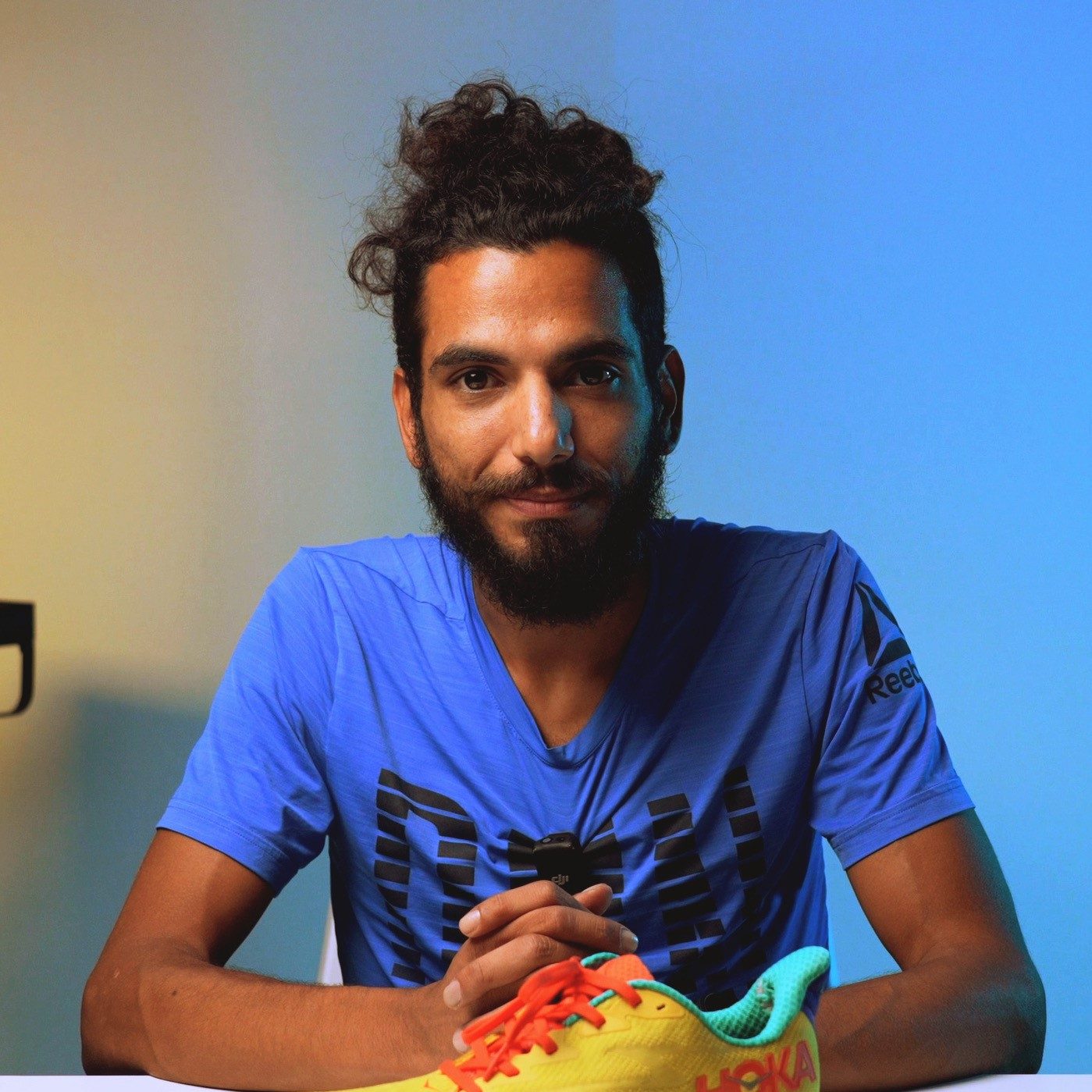Our verdict
Pros
- Good impact dampening
- Responsive ride
- Can pick up the pace
- Roomy toe zone
- Flexible and comfy
- Pleasantly lightweight
- Feels stable
- Reliable traction
- Great walking shoe
- No break-in required
Cons
- Runs a little warm
- Unruly laces
- Limited colorways
Audience verdict
Comparison
The most similar running shoes compared
+ + Add a shoe | |||||
|---|---|---|---|---|---|
| Audience score | 85 Good! | 86 Good! | 85 Good! | 84 Good! | |
| Price | $130 | $150 | $165 | $140 | |
| Pace | Daily runningTempo | Daily running | Daily running | Daily running | |
| Shock absorption | - | Low | - | - | |
| Energy return | - | Moderate | - | - | |
| Traction | - | High | - | - | |
| Arch support | Neutral | Neutral | Neutral | Stability | |
| Weight lab Weight brand | 8.3 oz / 235g 10 oz / 283g | 9.7 oz / 275g 10.1 oz / 287g | 10.4 oz / 295g 10.5 oz / 297g | 9.6 oz / 273g 10.2 oz / 289g | |
| Lightweight | ✓ | ✗ | ✗ | ✗ | |
| Drop lab Drop brand | 0.4 mm 0.0 mm | -0.1 mm 0.0 mm | -0.2 mm 0.0 mm | 0.2 mm 0.0 mm | |
| Strike pattern | Mid/forefoot | Mid/forefoot | Mid/forefoot | Mid/forefoot | |
| Size | Slightly small | True to size | True to size | True to size | |
| Midsole softness | Soft | Balanced | Soft | Balanced | |
| Difference in midsole softness in cold | Normal | Normal | Small | Normal | |
| Toebox durability | Decent | Good | Good | Decent | |
| Heel padding durability | Bad | Good | Good | Decent | |
| Outsole durability | Good | Good | Good | Good | |
| Breathability | Moderate | Moderate | Warm | Moderate | |
| Width / fit | Narrow | Medium | Wide | Medium | |
| Toebox width | Wide | Wide | Wide | Wide | |
| Stiffness | Stiff | Moderate | Stiff | Stiff | |
| Torsional rigidity | Flexible | Moderate | Stiff | Moderate | |
| Heel counter stiffness | Flexible | Stiff | Moderate | Flexible | |
| Heel lab Heel brand | 28.4 mm 28.0 mm | 27.6 mm 30.0 mm | 34.8 mm 33.0 mm | 26.0 mm 28.0 mm | |
| Forefoot lab Forefoot brand | 28.0 mm 28.0 mm | 27.7 mm 30.0 mm | 35.0 mm 33.0 mm | 25.8 mm 28.0 mm | |
| Widths available | Normal | NormalWide | Normal | Normal | |
| Orthotic friendly | ✓ | ✓ | ✓ | ✓ | |
| Season | All seasons | All seasons | All seasons | All seasons | |
| Removable insole | ✓ | ✓ | ✓ | ✓ | |
| Ranking | #212 Bottom 42% | #173 Top 47% | #224 Bottom 39% | #245 Bottom 33% | |
| Popularity | #271 Bottom 26% | #64 Top 18% | #125 Top 34% | #231 Bottom 37% |
Who should buy
We recommend the Altra Rivera 4 as an excellent choice for:
- Neutral runners looking for a versatile zero-drop trainer that can take on just about any type of run
- Runners with medium-width feet who prefer some extra toe room to splay out
- Zero-drop enthusiasts who want a moderately cushioned and lightweight road shoe
- Those in the market for a flexible and comfy shoe that's good for walking, gym days, and general fitness activities.
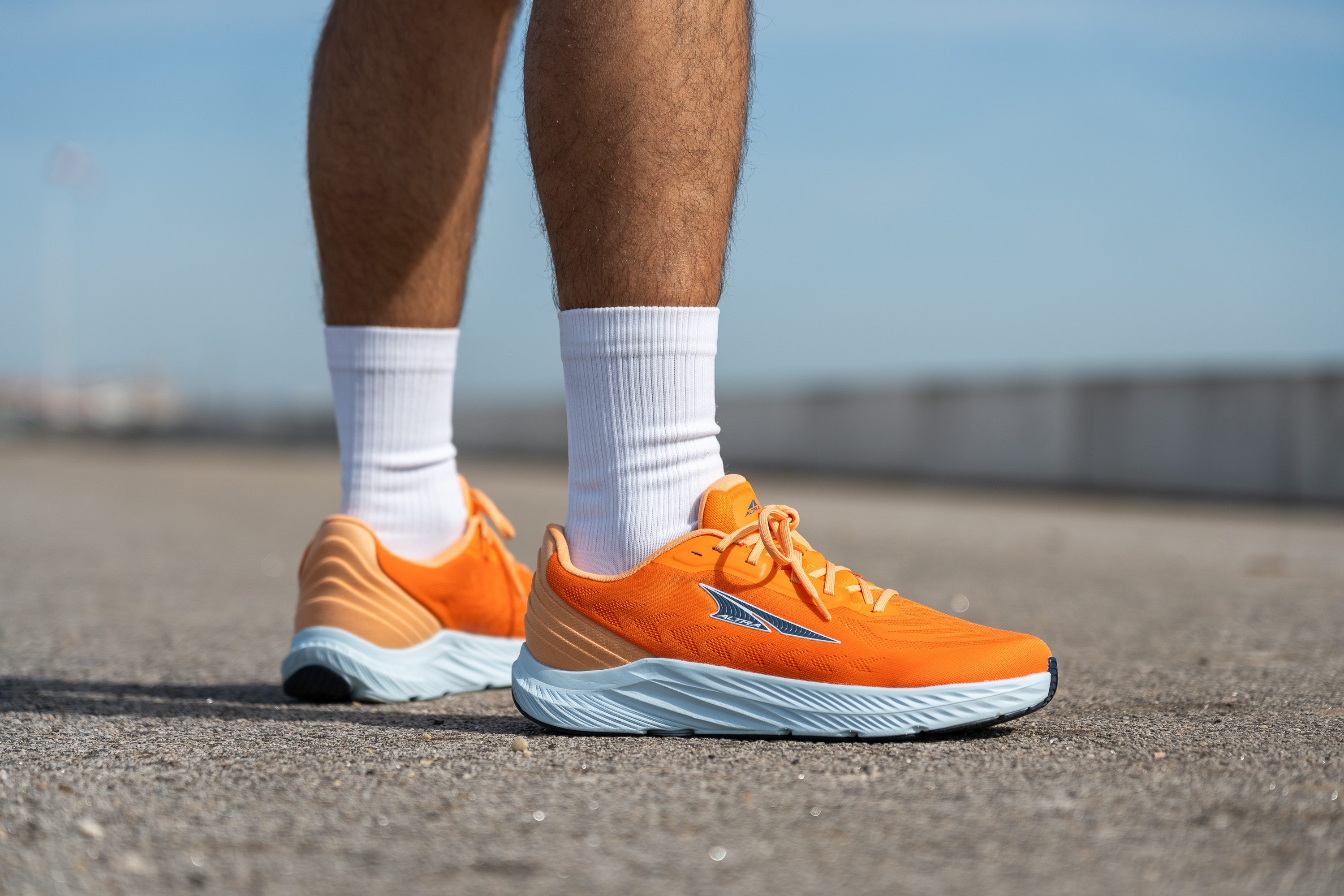
Who should NOT buy
The Rivera 4's performance in our breathability tests indicates lackluster airflow which makes the shoe a less-than-ideal choice for runs on hotter days. We recommend checking out the Altra Torin 7 as a better-ventilated alternative that won't feel as toasty come summertime.
One annoyance we faced while testing the Rivera 4 is that the laces kept coming undone and forcing us to stop and tie them back up. This can be prevented with a double knot, or by checking out the also versatile Altra Escalante 3, which also comes in more colorway options, as an alternative.
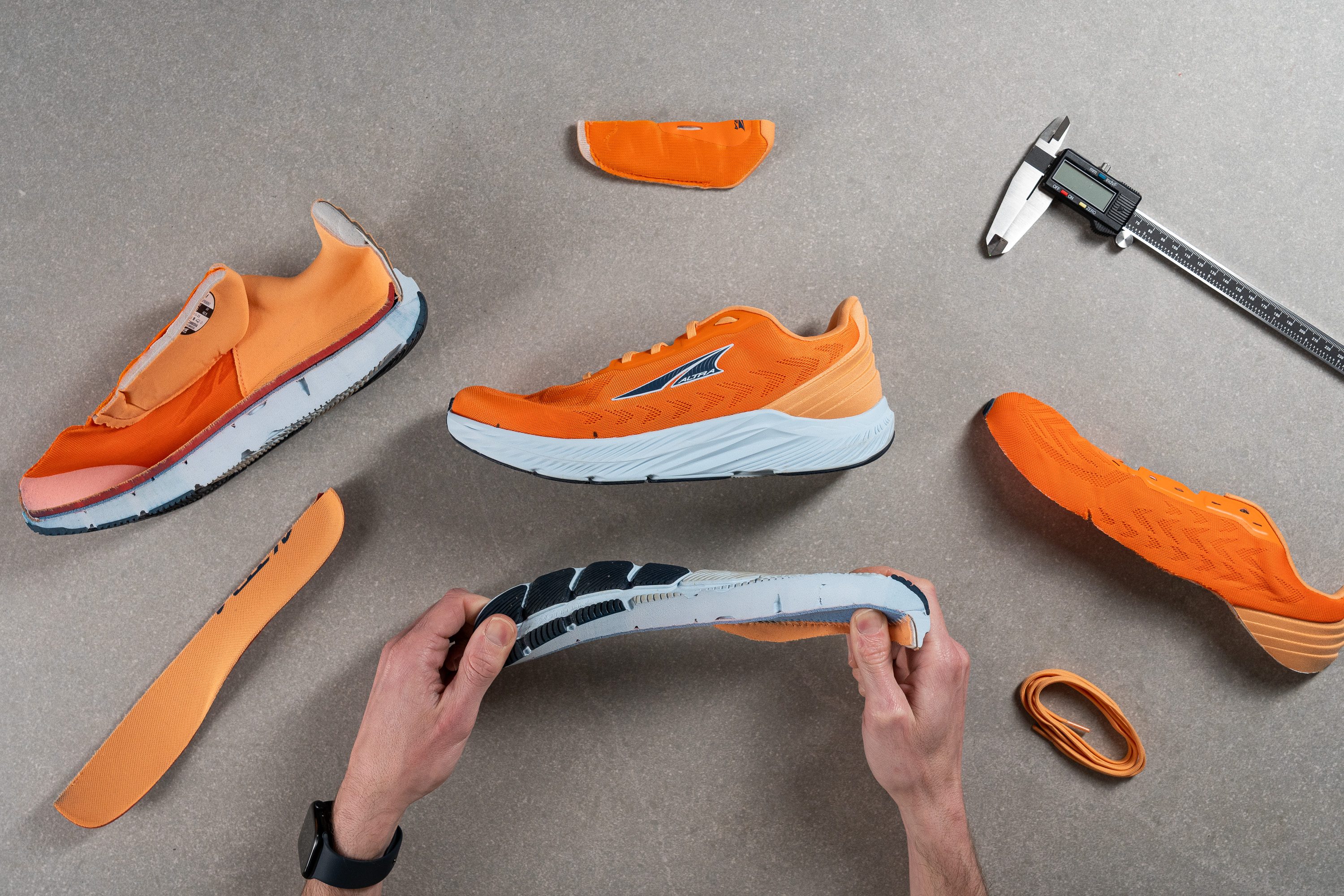
Cushioning
Heel stack
Using our caliper, we measured the Rivera 4's heel stack to be 28.4 mm thick; leaving us with only a negligible deviation from the 28 mm as stated by Altra. This is shorter than average but still provides us with an adequate amount of foam underfoot to effectively dampen our landings while testing the shoe.
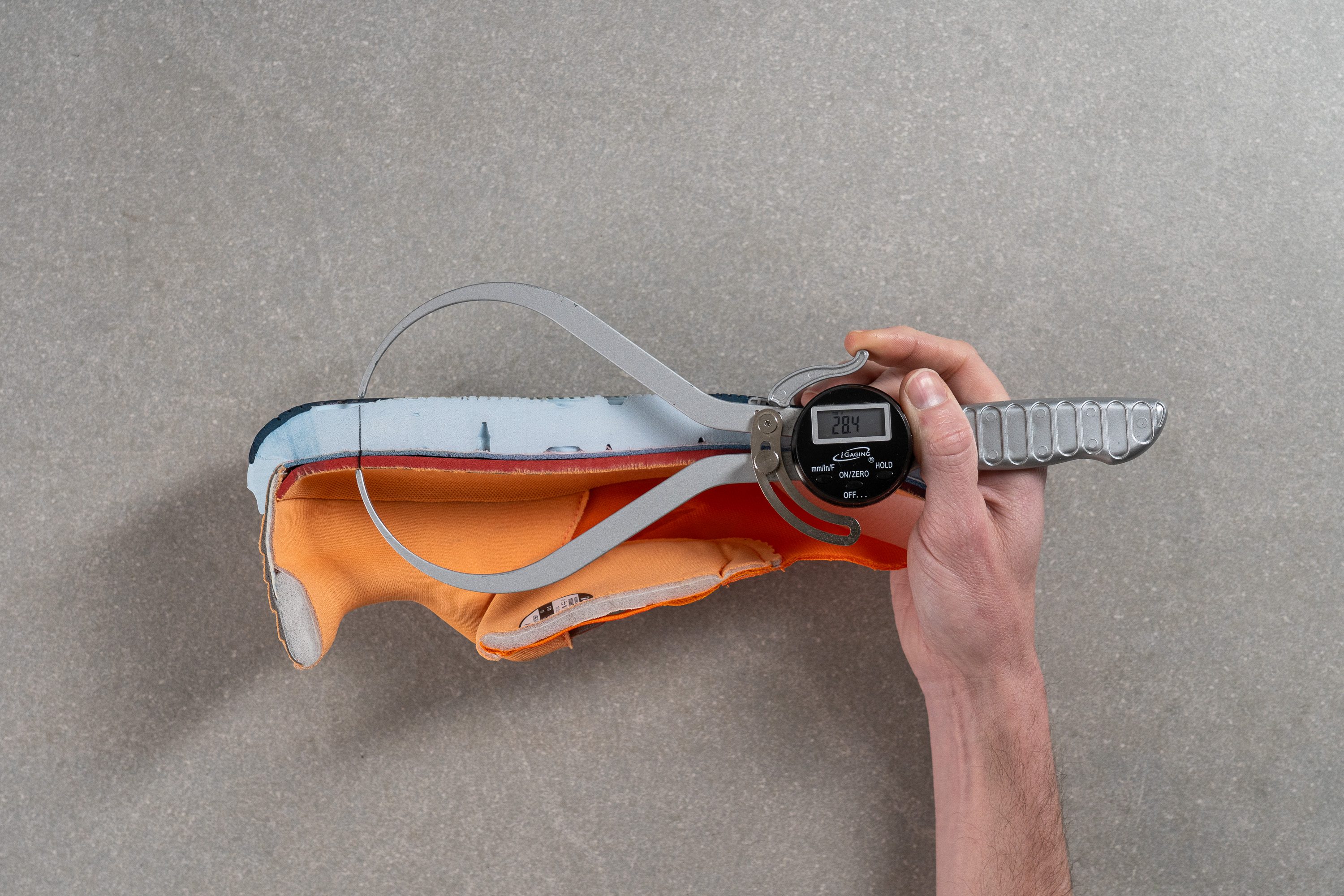
| Rivera 4 | 28.4 mm |
| Average | 34.8 mm |
Forefoot stack
We have to commend Altra again for being so accurate with their stated stack measurements as they got it spot on with the forefoot stack which is exactly 28 mm according to our caliper measurements. This is quite a bit more foam underfoot than the average road shoe boasts, meaning that even forefoot strikers should enjoy a well-cushioned and protective ride over any distance.
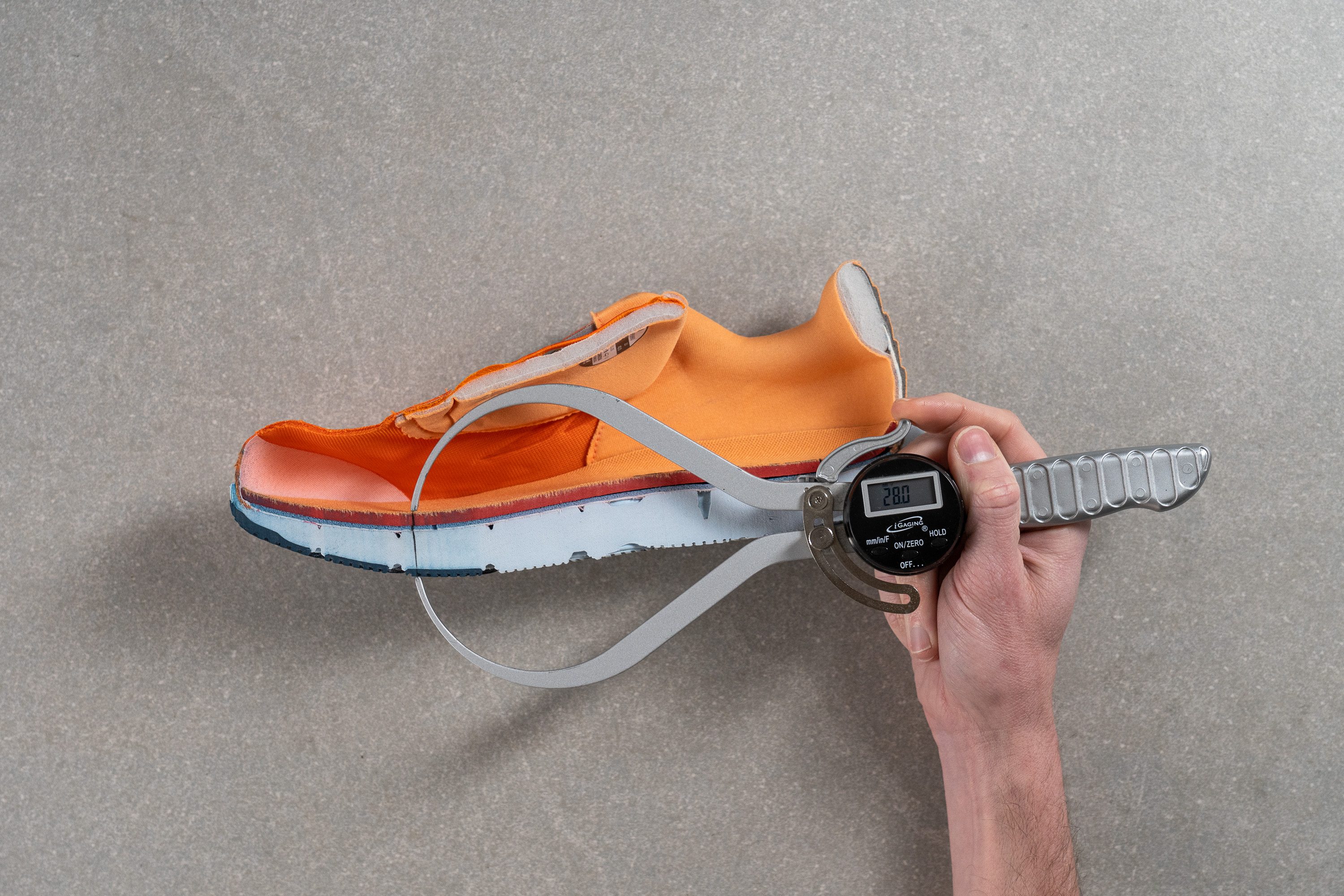
| Rivera 4 | 28.0 mm |
| Average | 26.2 mm |
Drop
The difference in our stack measurements leaves us with a drop height of 0.4 mm, an impressive level of accuracy we're happy to see here in the lab as we've found a frankly disturbing amount of discrepancies with brand-stated heel drops over the course of testing shoes.

As a result, the Rivera 4 will require an adjustment period from heel strikers and those unaccustomed to zero-drop shoes as it encourages a more midfoot/forefoot striking pattern. This, in turn, puts more of the load on our lower leg muscles and ankles which can be quite jarring and lead to more post-run soreness than usual.
Although it's a stability shoe, we suggest checking out the Altra Provision 7 as a stepping stone into the world of zero-drop shoes for the uninitiated since it actually boasts a slightly higher-than-advertised drop of 4.7 mm.
| Rivera 4 | 0.4 mm |
| Average | 8.6 mm |
Midsole softness
Pressing our durometer against the Rivera 4's midsole foam yields a rather plush reading of 19.8 HA. This level of softness really allows us to sink into and savor the midsole cushioning as it not only dampens the impact of our landings but also pampers our foot with every stride.
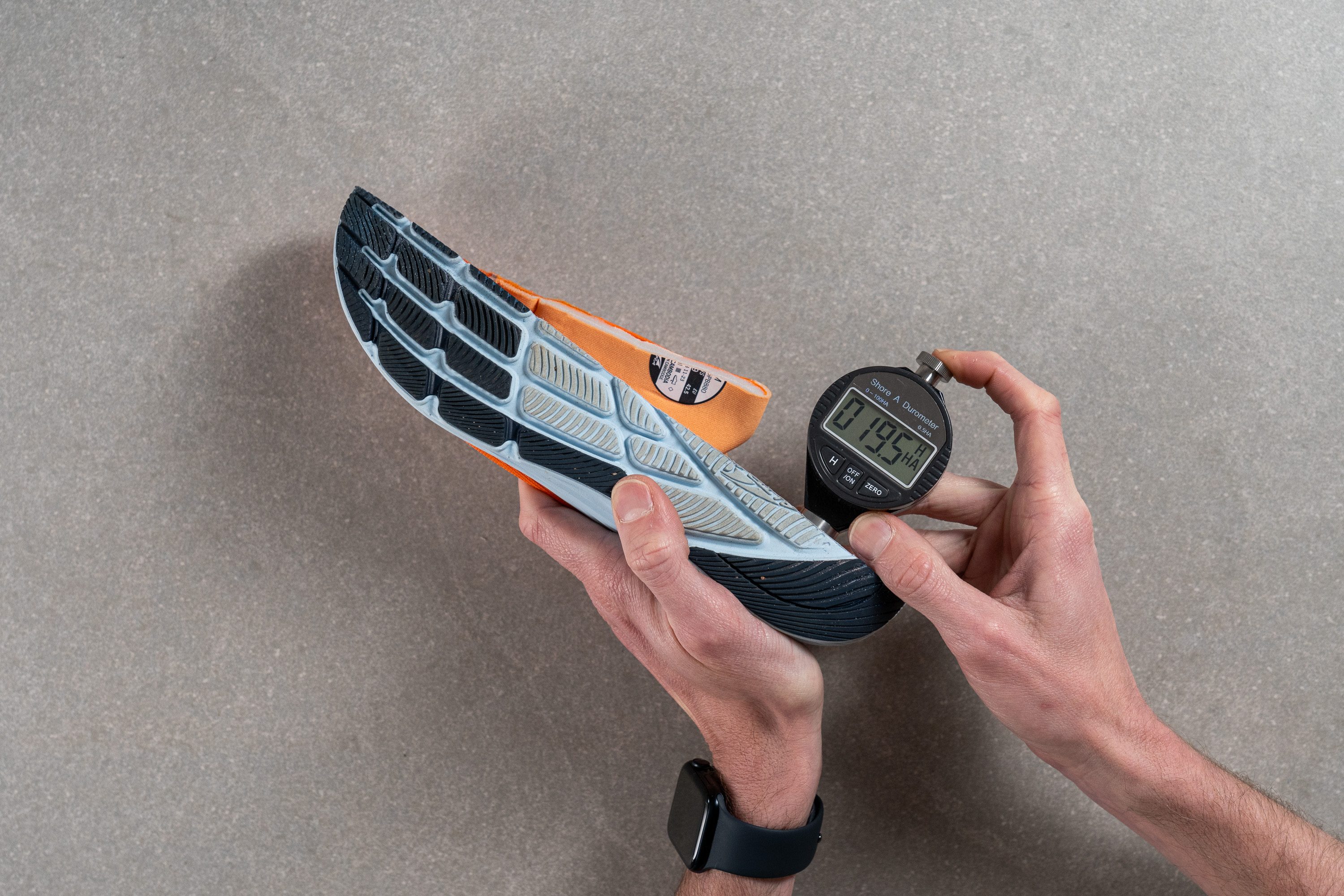
There's a satisfying squish as our weight bears down on the midsole which avoids compressing too far and bottoming out. This is followed by an energetic and almost elastic rebound as the foam retakes its shape as we transition to toe-off.
This mixture of forgiving and responsive makes the Rivera 4 suitable for a wide variety of runs; whether we're out for a slow recovery, a long-distance haul, or even a speedy tempo training session. What's more, it feels comfortable enough to use as a walking shoe and gym days.
| Rivera 4 | 19.8 HA |
| Average | 20.4 HA |
Size and fit
Size
Altra Rivera 4 fits slightly small (29 votes).
Width / Fit
For a brand generally known for their spacious toeboxes that easily accommodate wide feet, the Rivera 4 isn't quite as Altra-wide as we expected. Using our caliper, we measured its toebox to be 96.5 mm wide which is a little short of our current lab average. This gives us a nice and secure fit at the forefoot that doesn't feel too constricting thanks to the soft upper material that has a little give to it.
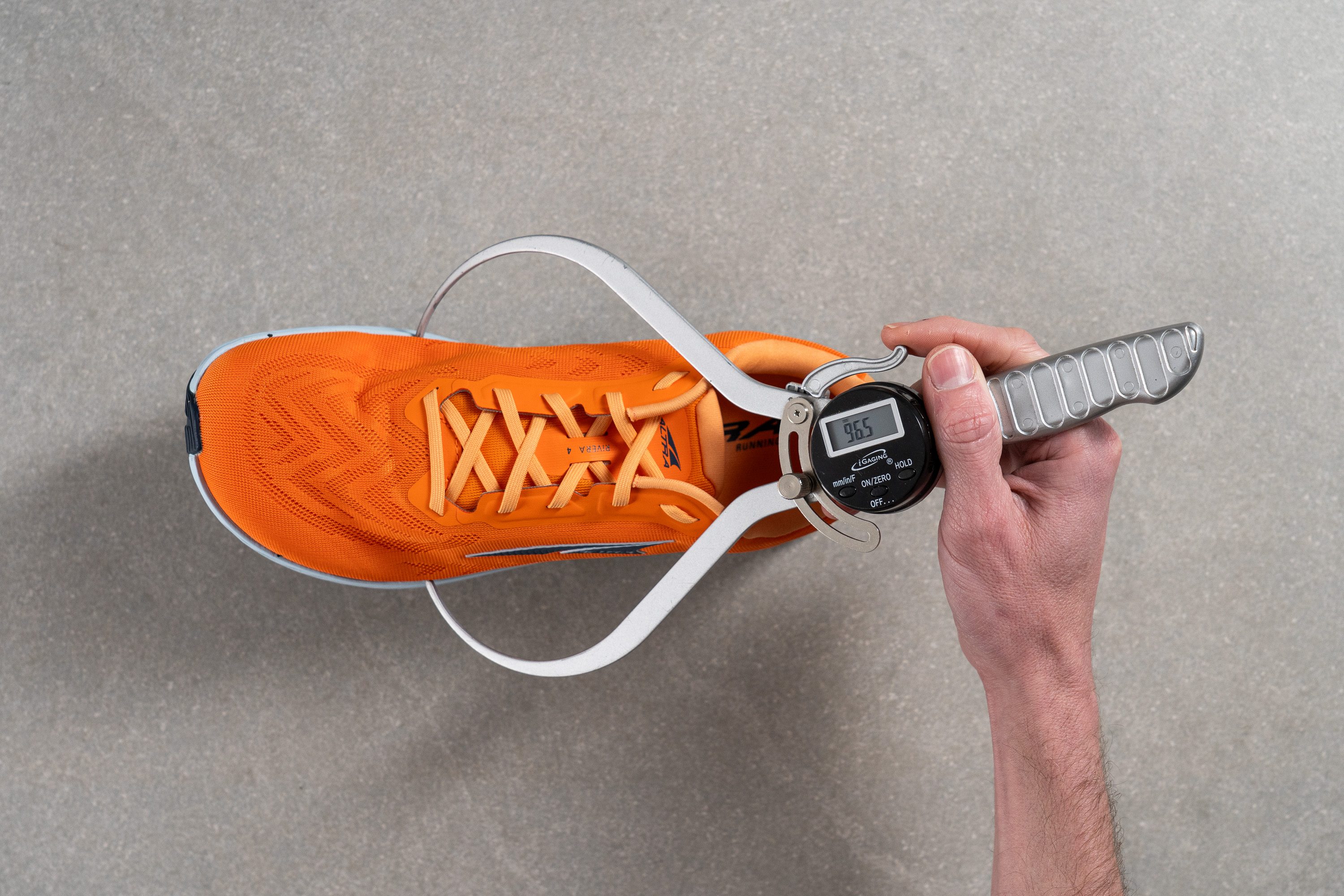
For runners with broad feet, we recommend checking out a roomier alternative like the Altra Torin 7 instead.
This test follows an older methodology, which is why you don't see recently tested shoes in the chart. Results from different methodologies can not be compared.
| Rivera 4 | 96.5 mm |
| Average | 98.5 mm |
Toebox width
Up in the area around the big toe is where we get more of what we were expecting from an Altra toebox. At 85.7 mm wide according to our caliper measurements, it's significantly wider than average in that part of the toebox. This gives us plenty of room to splay out naturally without our toes butting up against the sidewalls as we run.
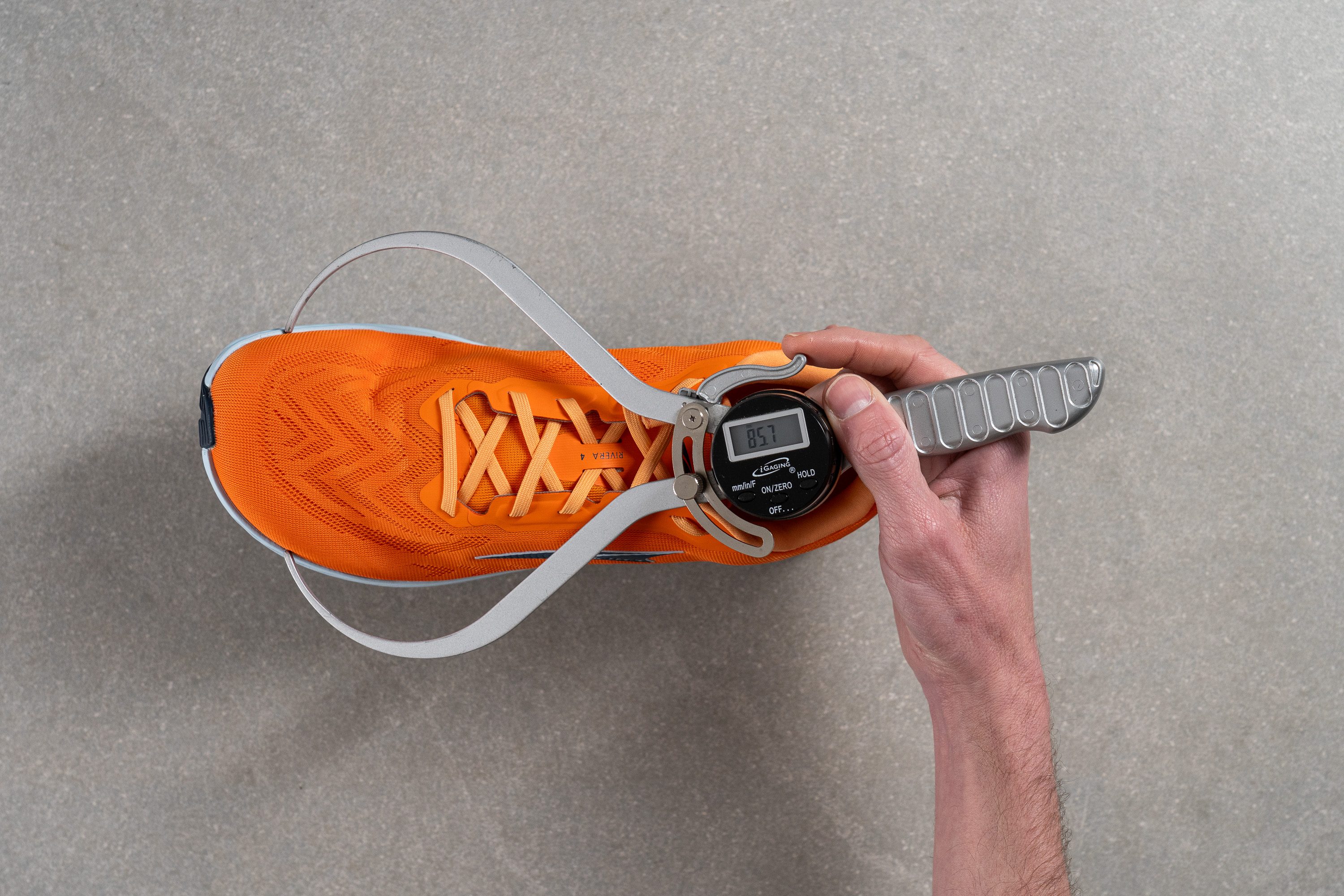
This test follows an older methodology, which is why you don't see recently tested shoes in the chart. Results from different methodologies can not be compared.
| Rivera 4 | 85.7 mm |
| Average | 78.4 mm |
Flexibility / Stiffness
We secured the Rivera 4 to our workbench and used a force gauge to find that only 18.7N of force is needed to bend the shoe to 90 degrees. As such, the Rivera 4 is notably more flexible than the average road shoe.
This is thanks in great part to how the midsole is scored with grid-like grooves (dubbed InnerFlex by Altra) that follow the bones of our foot. In turn, the shoe is able to conform to the natural flexion of our foot with little resistance. This translates to a ride that feels incredibly comfortable and natural underfoot.
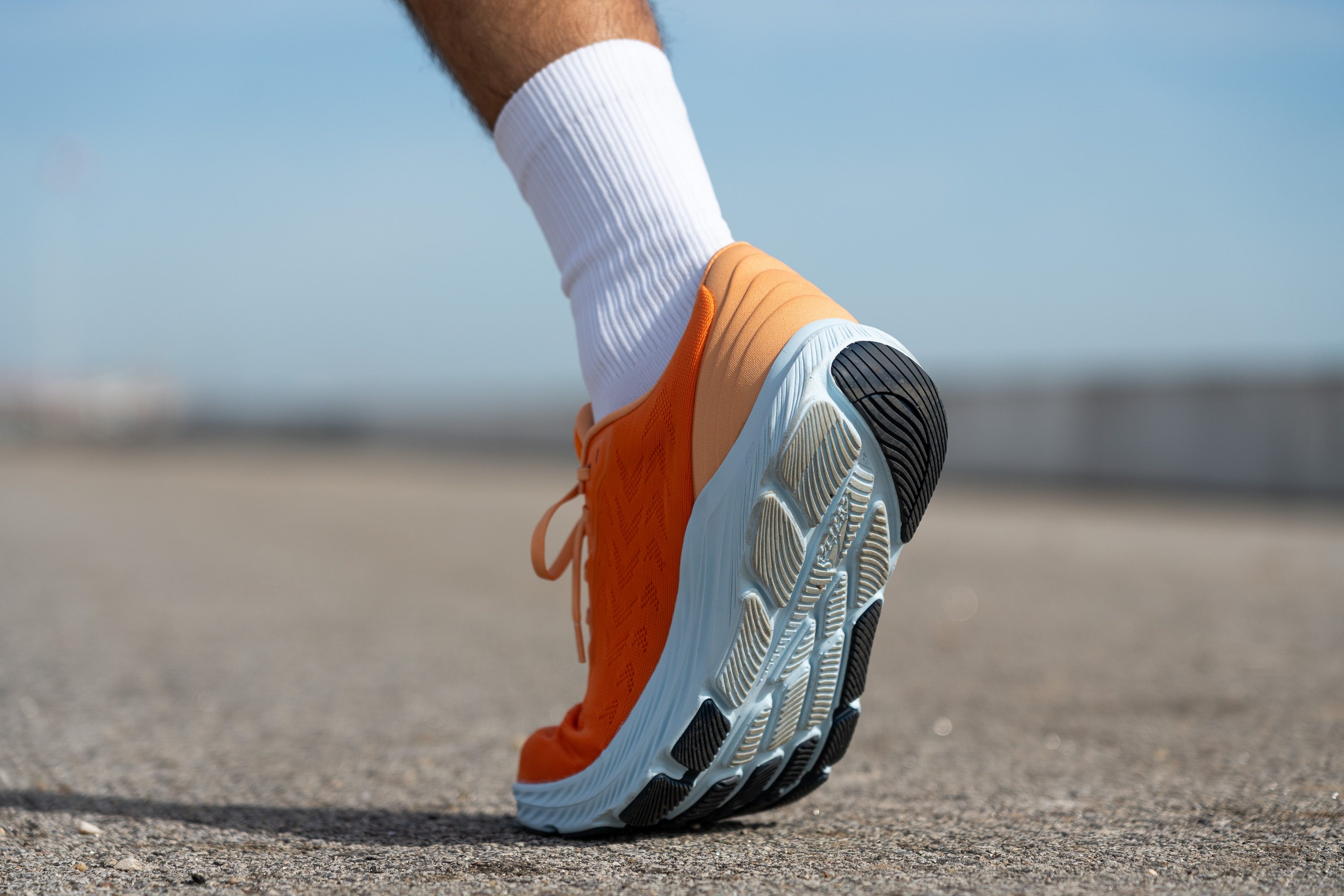
This test follows an older methodology, which is why you don't see recently tested shoes in the chart. Results from different methodologies can not be compared.
| Rivera 4 | 18.7N |
| Average | 28.1N |
Stiffness in cold (%)
We also repeated our flex test after leaving the Rivera 4 in the freezer for twenty minutes and found that it became 33.6% stiffer. This is not far off from how consistent the average road shoe is under similar conditions. While this may be the case, with only 25N of force needed to bend the chilled Rivera 4 to the desired point, it's still more flexible than average at room temperature!
So while the shoe will feel somewhat stiffer underfoot come the cooler months, it will still certainly be pliable enough to provide a nice and comfy ride.
| Rivera 4 | 34% |
| Average | 33% |
Weight
Which brings us to the weigh-in and the Rivera 4 tips the scale at 8.3 oz (235g) which is quite a bit lighter than the average road shoe. This plays a big part in the versatility of the Rivera 4 as its feathery frame means that we can push the pace for some speedwork or empty out the gas tank with a long-distance effort without feeling hindered by the shoe.
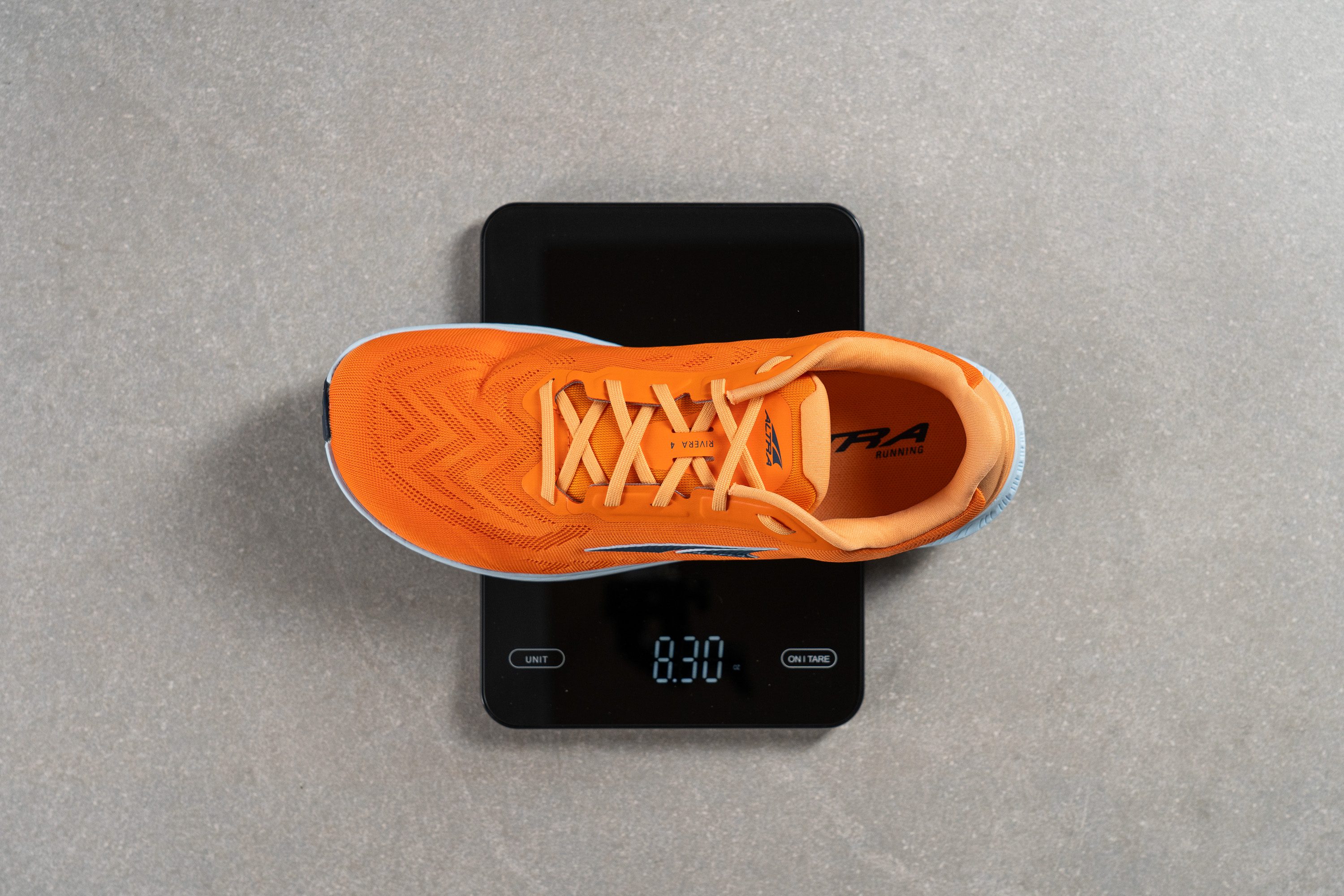
| Rivera 4 | 8.3 oz (235g) |
| Average | 9.3 oz (264g) |
Breathability
To test its breathability, we put the Altra Rivera 4 through our state-of-the-art smoke test. As we can see from the footage, it's quite some time before any smoke is able to permeate through the shoe's upper. Even then, it comes out slowly and in thin wisps; leading us to give the Rivera 4 a rather lackluster breathability score of 3 out of 5.
While this is an adequate amount of airflow generally, the shoe will still feel quite toasty during warmer summer runs. For a better-ventilated alternative that's better suited to hot days, we suggest checking out the Altra Torin 7 instead.
When inspecting a backlit cross-section of the shoe, we can see that the light is only able to shine through the more perforated toebox area while the rest blocks it out entirely. This sheds some light on the Rivera 4's unimpressive performance in our smoke test as heat is channeled almost exclusively through the toebox while the rest of the shoe remains pretty well insulated.
Our closeup image also shows that while the upper mesh is dotted with regular perforations that promote airflow, it's multi-layered and rather densely woven. This explains the smoke's delayed ability to escape make its way through the seemingly porous mesh.
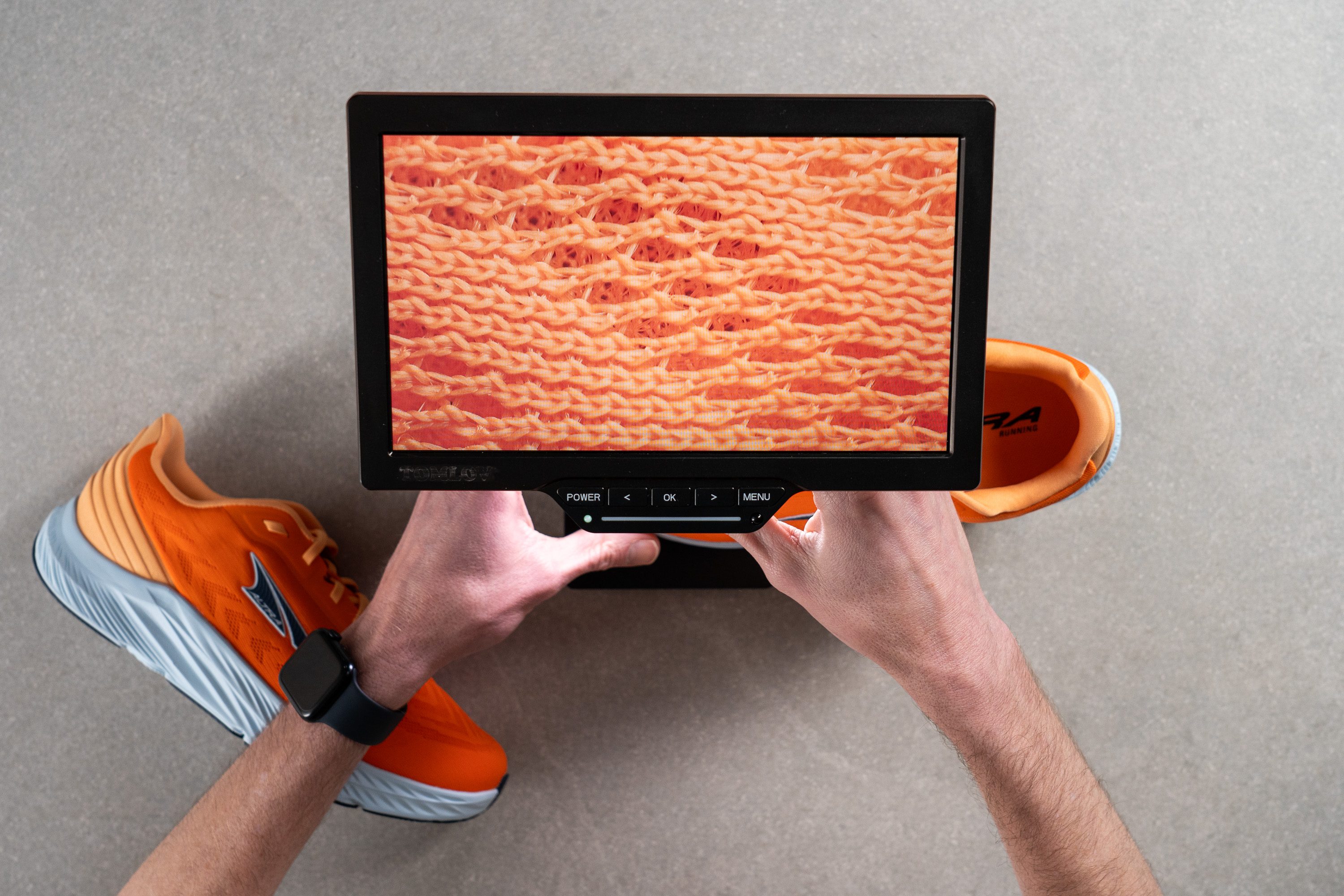
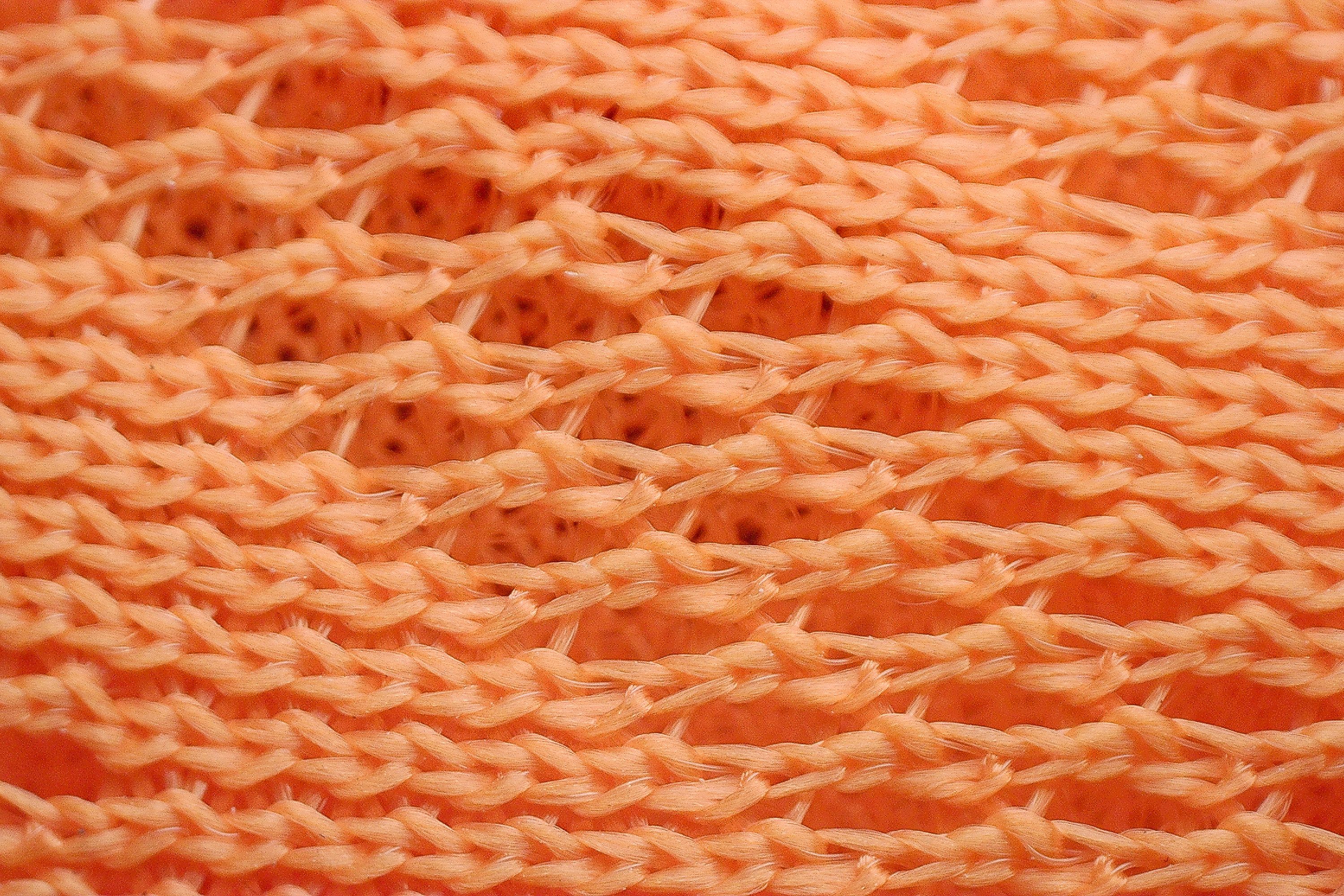
| Rivera 4 | 3 |
| Average | 3.7 |
Stability
Lateral stability test
As a neutral daily trainer with a fairly sizeable stack, the Rivera 4 isn't particularly stable. It doesn't feel overly wobbly or unsteady by any means but does very little to mitigate the effects of an overpronating stride. We recommend that overpronators look into the Altra Paradigm 7 as a zero-drop stability that promotes a more neutral stride which will help avoid developing injuries over time.
Torsional rigidity
The Rivera 4 puts up very little resistance as we twist and bend the shoe in our hands, leading us to give it a torsional rigidity score of 2 out of 5 on our subjective scale. As such, the shoe's platform is able to bend and twist along with the natural movements of our foot with relative ease. While this translates to a more natural and comfortable sensation underfoot, which is desirable in a daily trainer, it leaves us with a less-than-level landing platform if we misstep or hit uneven terrain.
| Rivera 4 | 2 |
| Average | 3.5 |
Heel counter stiffness
The heel counter is similarly pliable, earning another 2 out of 5 in our manual assessment. This is, again, nice and comfy for a daily trainer as it gingerly holds our rearfoot in place without putting pressure on our heel or tendons.
It was only during our more fast-paced sessions that this became somewhat of an issue as we could feel some slippage while making sharp turns at high speeds.
| Rivera 4 | 2 |
| Average | 2.9 |
Midsole width - forefoot
Using our caliper, we measured the Rivera 4's midsole to be 105 mm wide at the forefoot, making it significantly narrower than our current lab average. This is another effective weight-saving measure as it decreases the amount of material used.
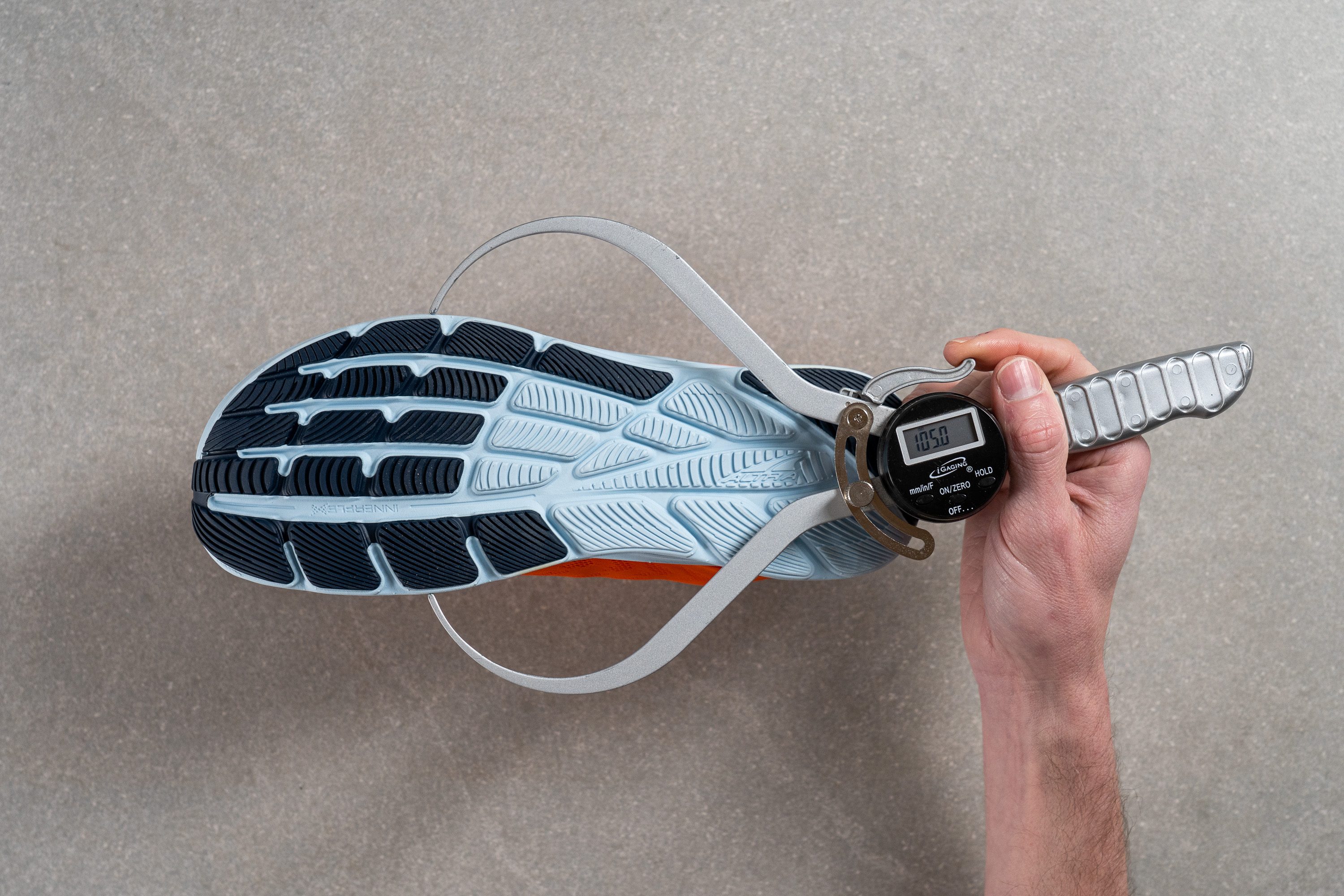
It also gives the shoe a sleek and nimble silhouette that, on the one hand, makes it feel quite agile when cornering at high speed. On the other, however, it was during these maneuvers while testing the Rivera 4 that we felt most vulnerable to a rolling an ankle.
| Rivera 4 | 105.0 mm |
| Average | 114.4 mm |
Midsole width - heel
The Rivera 4's midsole is similarly narrow at the heel, measuring only 83.4 mm wide according to our caliper.

Apart from the inherent challenges of zero-drop shoes for heel-strikers, having such a narrow landing surface will pose further difficulties that will either feel too wonky or force them to adapt more quickly. The Altra VIA Olympus 2 has a much more robust midsole (stack-wise as well) that should feel more steady for those runners.
| Rivera 4 | 83.4 mm |
| Average | 90.7 mm |
Durability
Toebox durability
To see how the Rivera 4 deals with extreme wear and tear, we subjected it to several lashings from our Dremel; starting with the toebox.
Not only did it survive the test but it snagged our Dremel's spinning abrasive element to a halt right at the last second of the test. While our tool was able to mangle and fray the mesh to a certain extent, it wasn't able to tear clean through the mesh and failed to compromise the integrity of the toebox. This earns the Rivera 4 a very respectable toebox durability score of 3 out of 5.
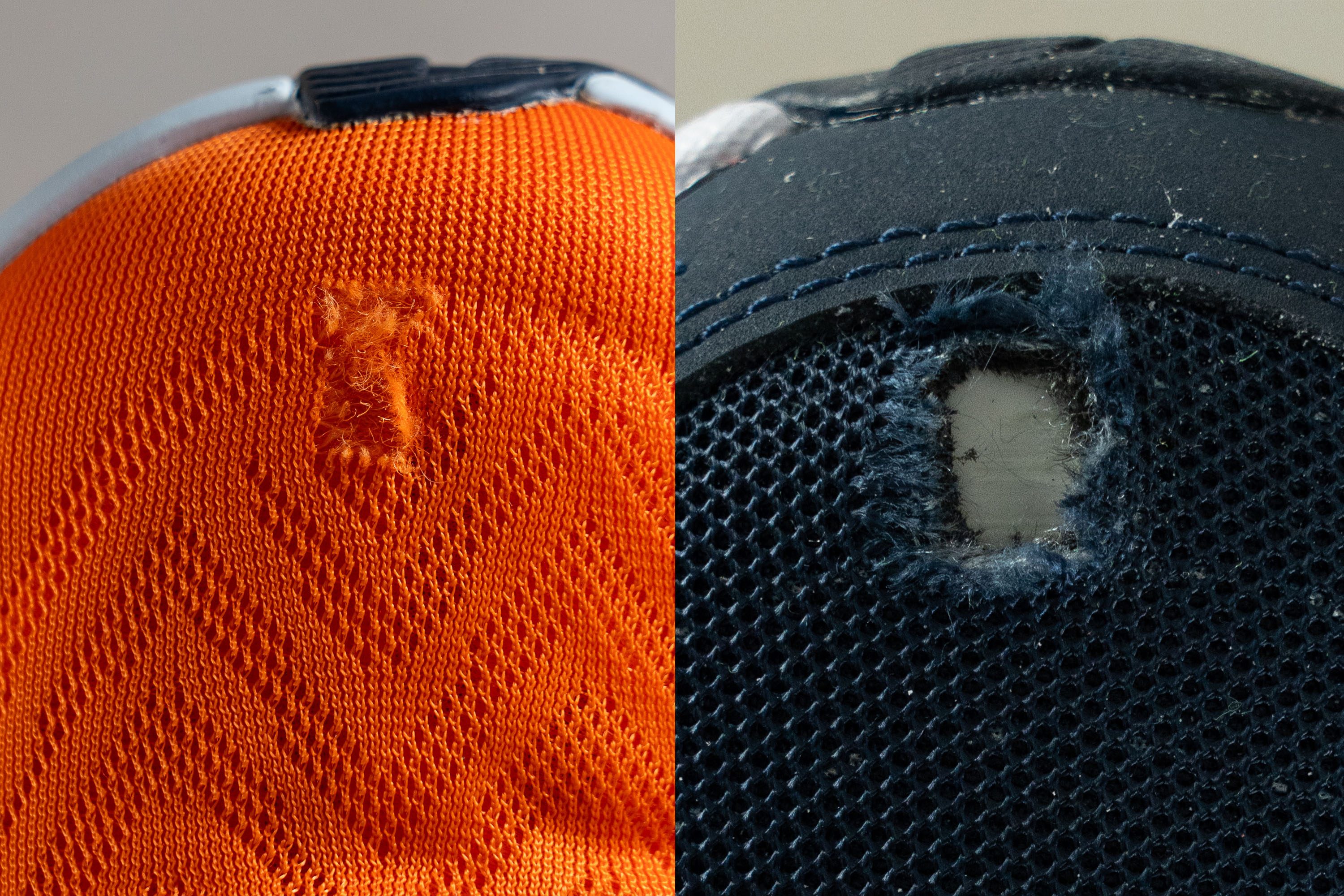
Compare that to the massive hole we blasted clean through the Under Armour Charged Assert 10 in this same assessment.
| Rivera 4 | 3 |
| Average | 2.6 |
Heel padding durability
Next, we set our sights on the heel collar and set our Dremel against the Rivera 4 for another four seconds of punishment.
We weren't nearly as impressed this time around as we found that the tool's abrasive element made quick work of the lining and had yoinked out a significant amount of padding by the time we powered it down. This leads us to give the Rivera 4 an abysmal heel padding durability score of 1 out of 5 and means we recommend against going sockless in this shoe as it could prematurely wear out the heel collar.

| Rivera 4 | 1 |
| Average | 3.4 |
Outsole hardness
The Rivera 4's outsole is about as hard as our current lab average, registering a durometer reading of 80.3 HC. This usually denotes a good mix of grip and durability.
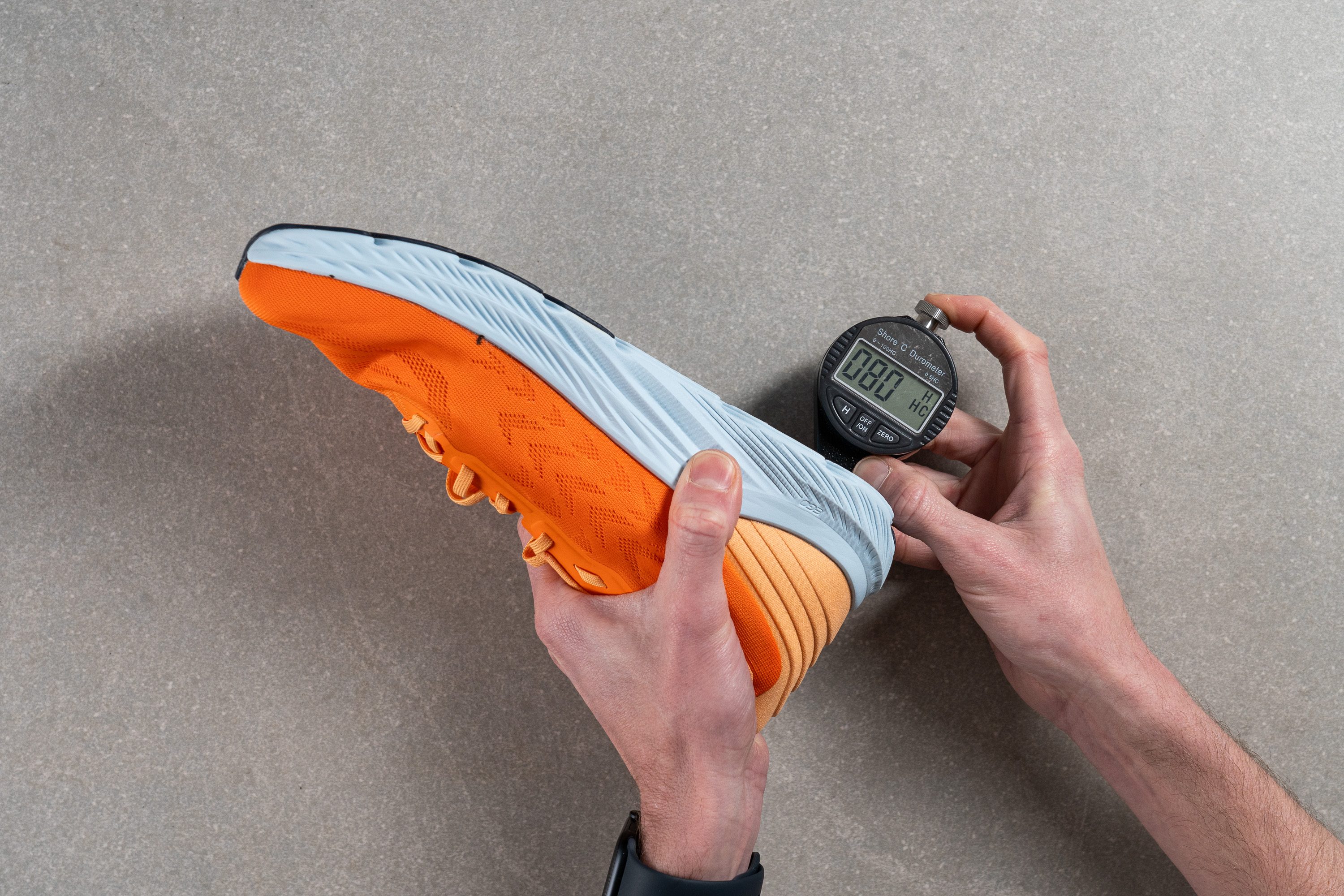
| Rivera 4 | 80.3 HC |
| Average | 79.2 HC |
Outsole durability
For our Dremel's final outing against the Rivera 4, we set its abrasive element spinning at 10K RPM and pressed it against the outsole for twenty-two seconds.
To quantify the damage done in the wake of the test, we used a tire tread gauge to measure the indentation left behind and found that we had shorn away 0.7 mm of material. This is ever so slightly better than average and means that the Rivera 4 should comfortably last the expected shelf life of 400-500 miles before any major signs of wear and tear appear on the outsole.
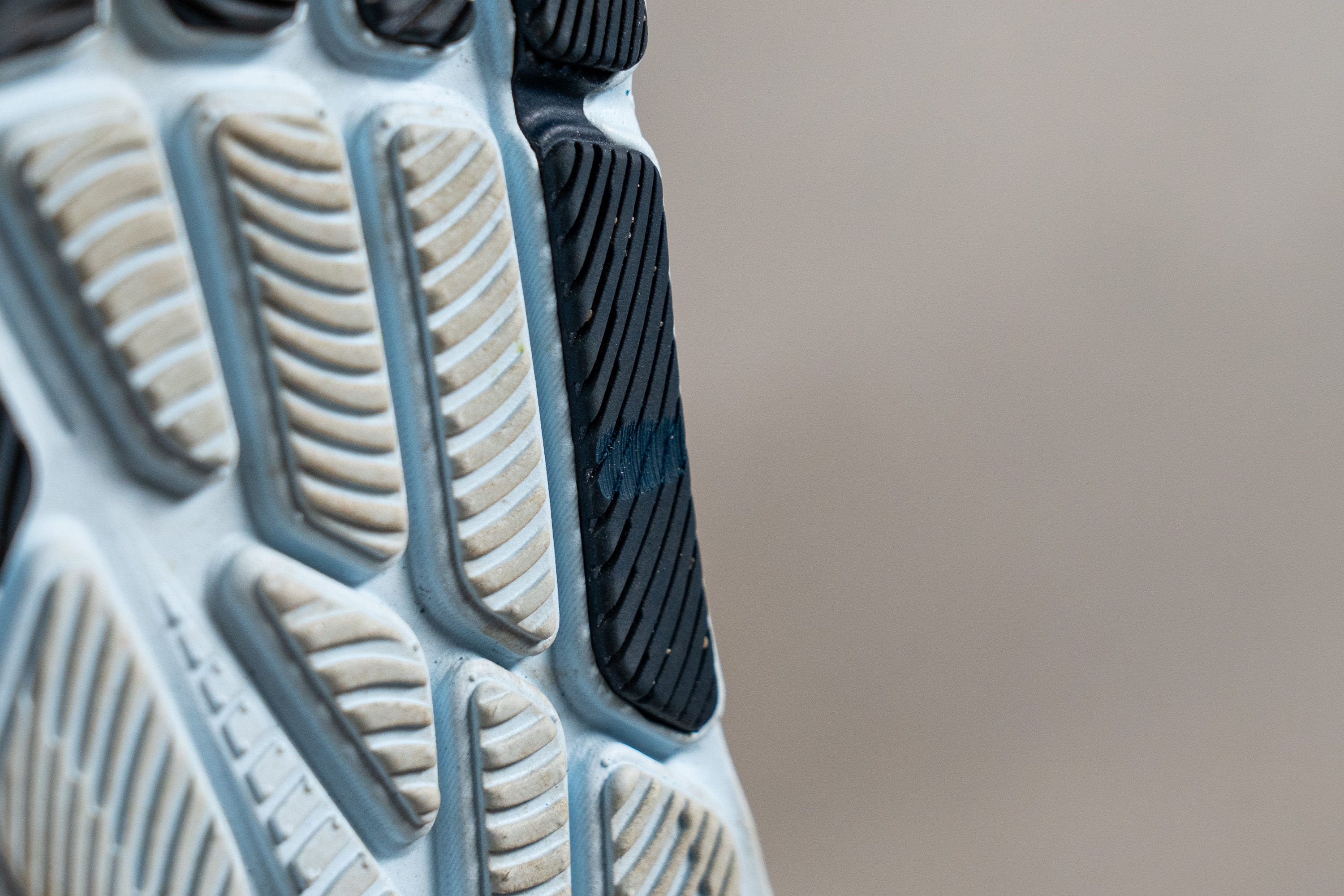
| Rivera 4 | 0.7 mm |
| Average | 1.1 mm |
Outsole thickness
We measured the outsole to be 3.1 mm thick according to our caliper. This is on par with our current lab average and gives us a good amount of material to wear through before it's fully cooked.

Also, Altra chose to go for partial coverage of the midsole with protective rubber, focusing on the areas that make the most contact with the ground. This is a smart weight-cutting move that minimizes the use of relatively heavy rubber in places where it's not needed.
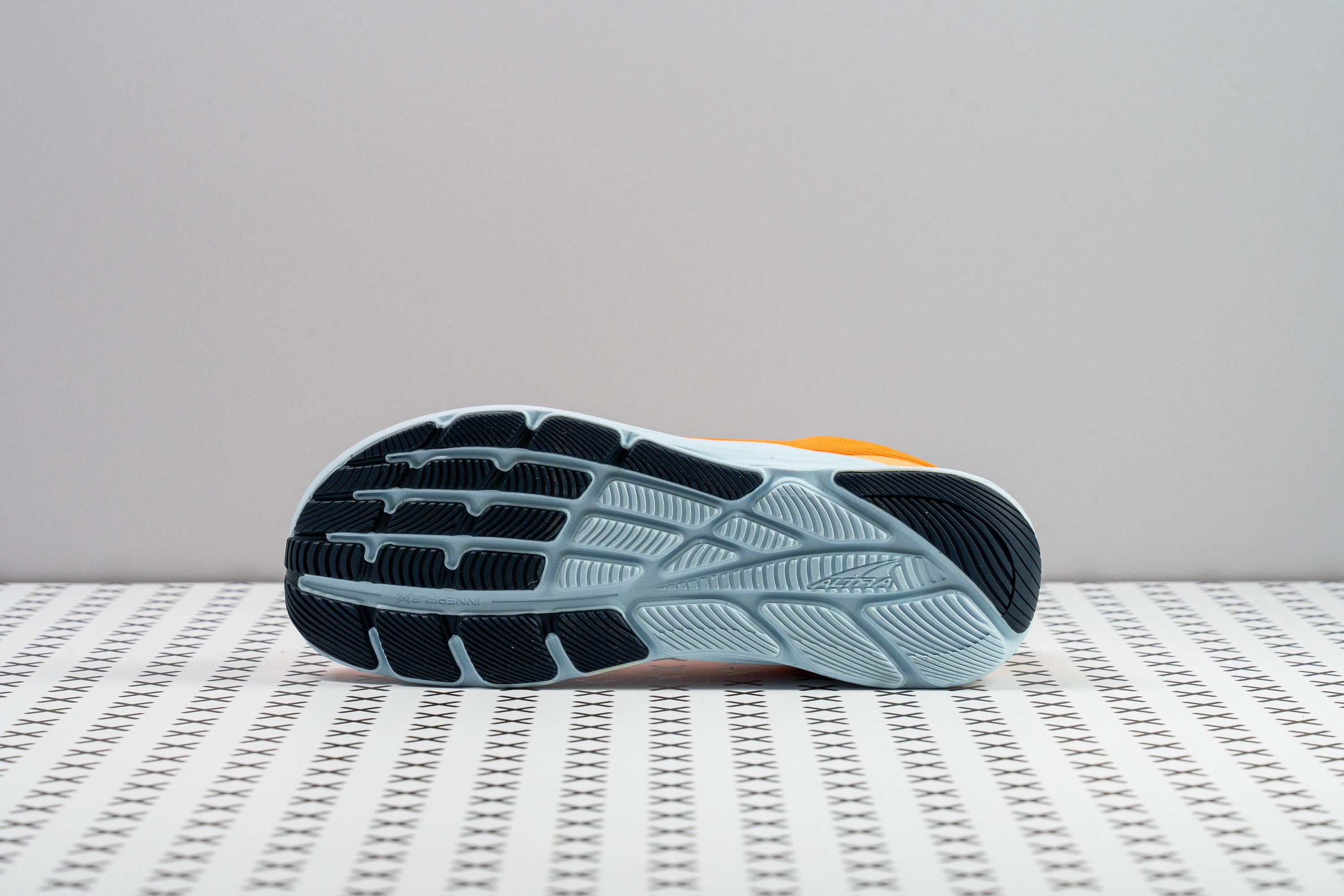
| Rivera 4 | 3.1 mm |
| Average | 3.2 mm |
Misc
Insole thickness
At 4.7 mm thick according to our caliper measurements, the Rivera 4's insole is on par with our current lab average. This provides us with a fair amount of arch support and a cushy enough footbed that softly welcomes our foot within the shoe on landing.
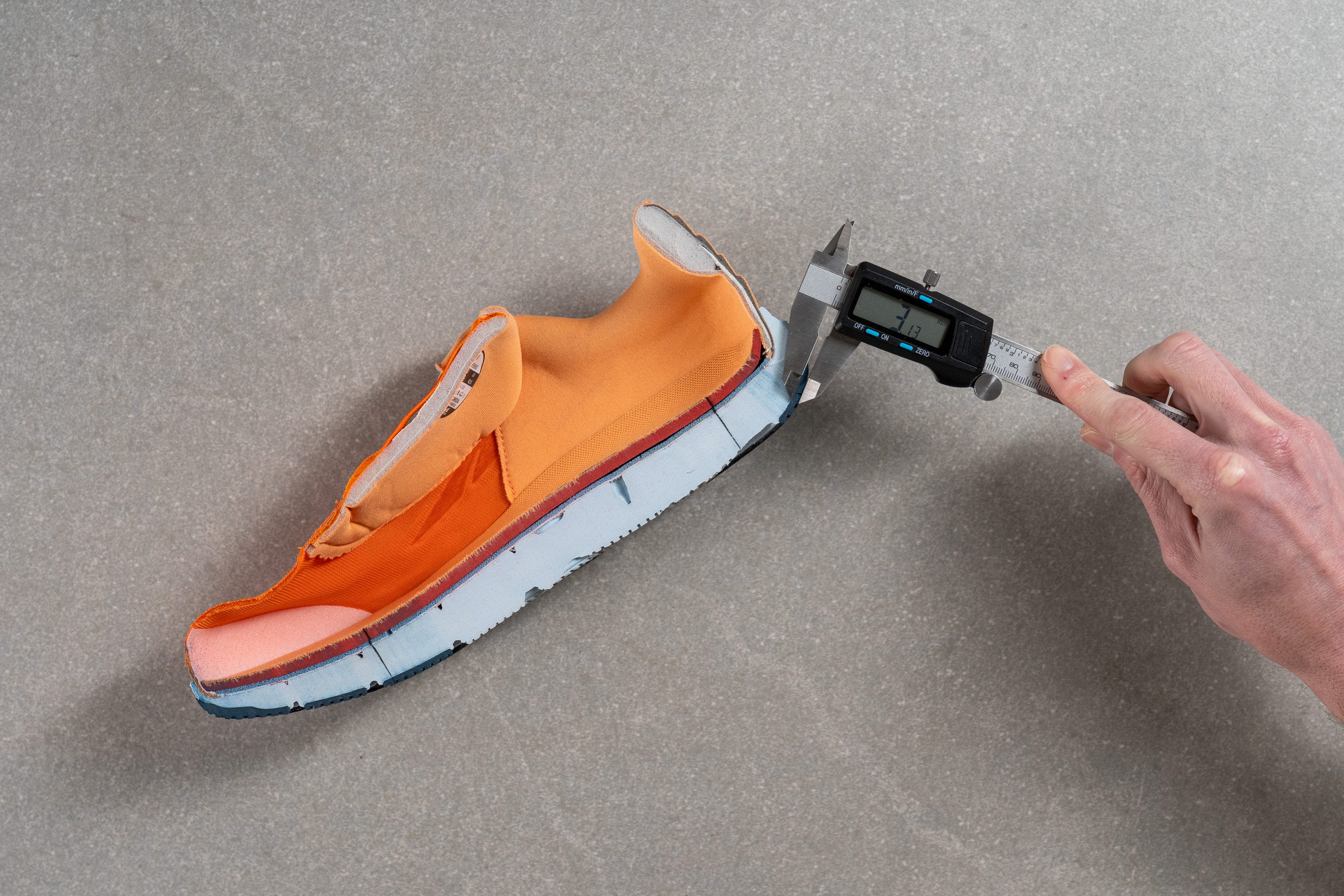
| Rivera 4 | 4.7 mm |
| Average | 4.5 mm |
Removable insole
The insole is fully removable, so replacing it with an aftermarket product or a custom orthotic is possible if necessary.
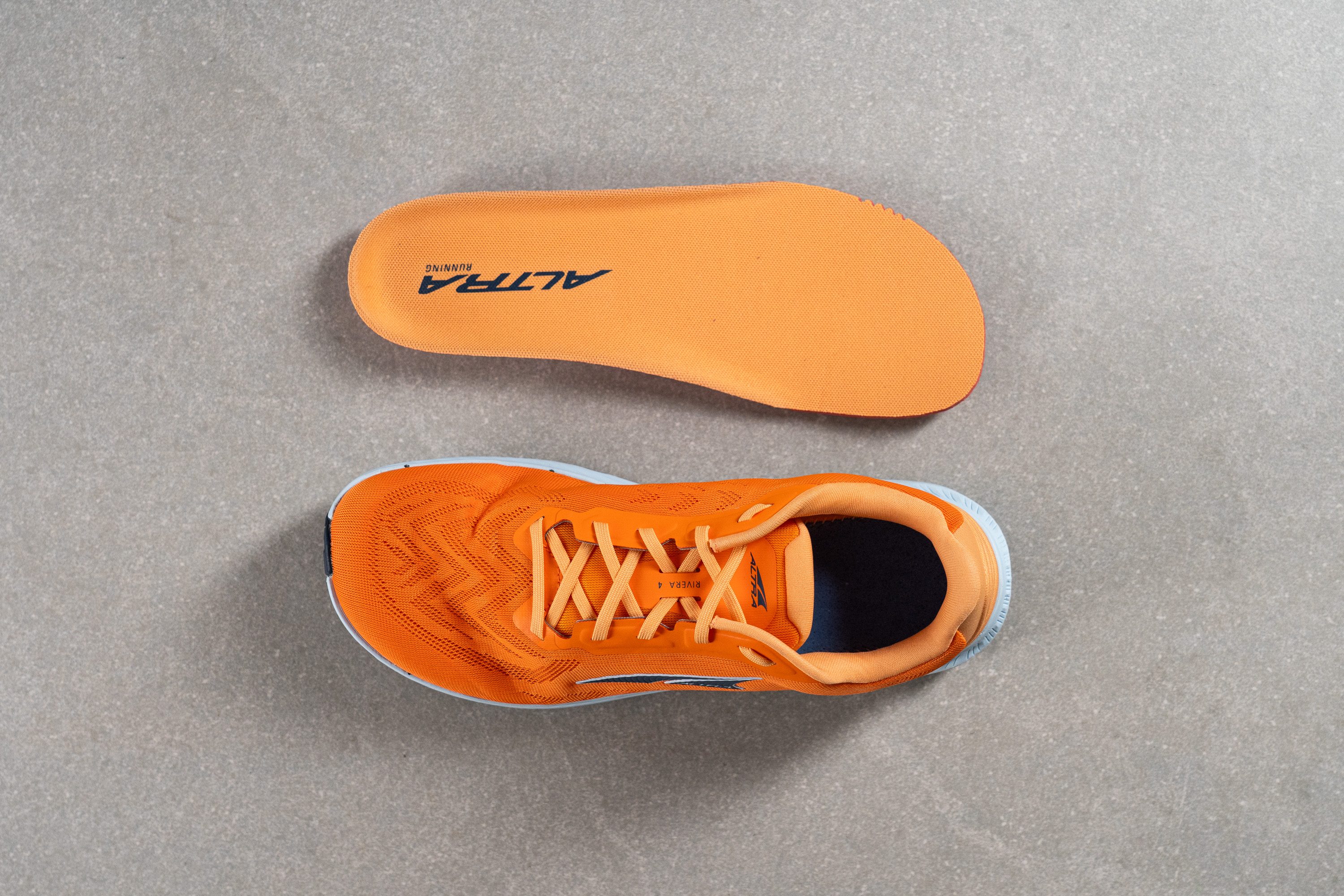
| Rivera 4 | Yes |
Midsole softness in cold (%)
We placed the Rivera 4 in our freezer for twenty minutes in order to see how the midsole would react to the cold. Once appropriately chilled, we took another durometer reading of the midsole foam and found that it became 27.2% firmer. This makes it about as consistent as the average road shoe between warm and cold conditions. As such, the Rivera 4 certainly won't feel as plush and luxurious underfoot come wintertime, but should still provide well-cushioned landings in frigid temperatures.

| Rivera 4 | 27% |
| Average | 24% |
Reflective elements
There are no reflective elements to be found whatsoever on the Rivera 4, making them a less-than-ideal choice for nocturnal runs unless used in tandem with additional high-vis gear.
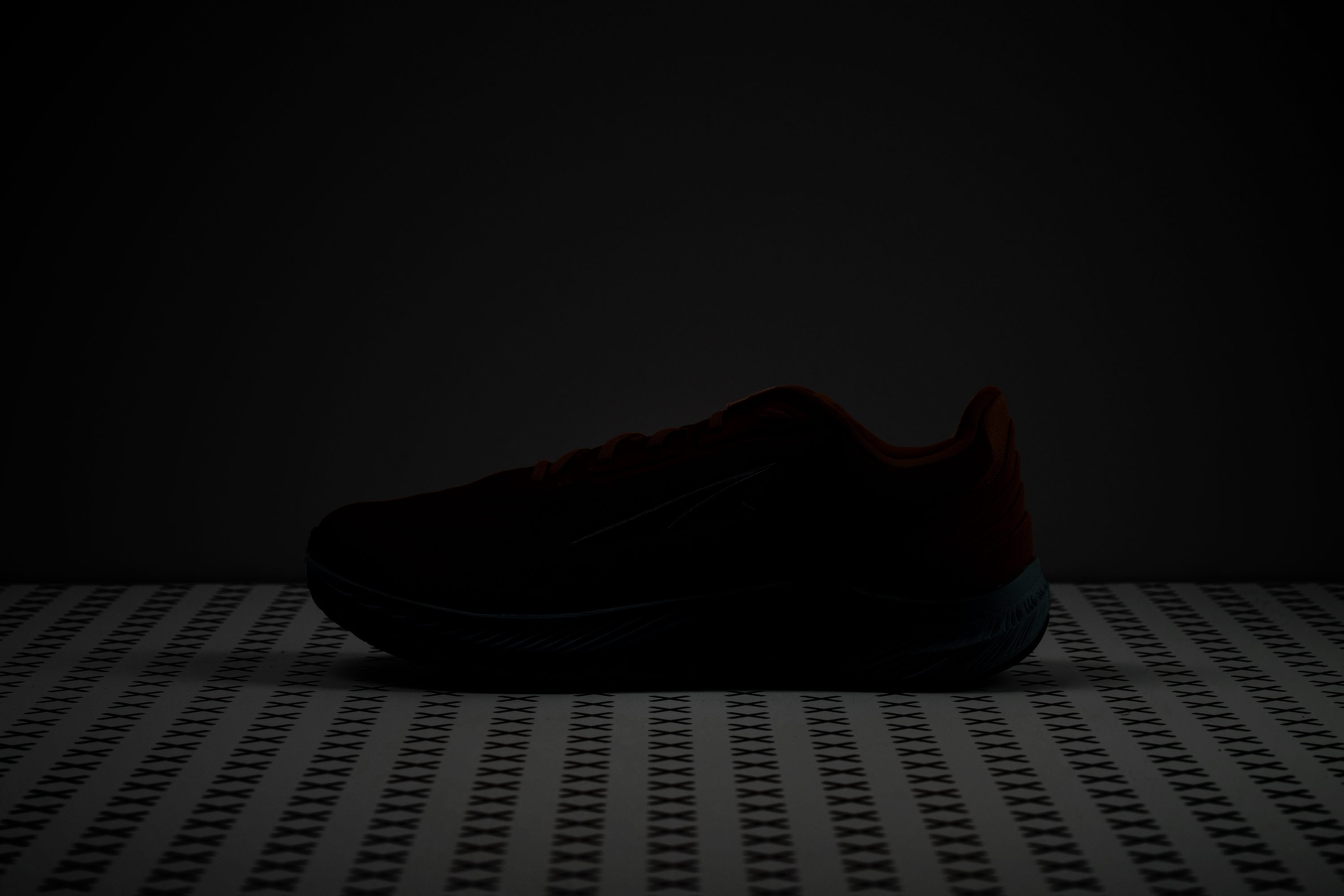
| Rivera 4 | No |
Tongue padding
Of chunky, the tongue itself is a whopping 9 mm thick, making it much more padded than average for a road shoe. This gives us a nice and beefy buffer zone between our instep and the laces, putting the thought of lace bite about as far from our minds as it could go as we tested the Rivera 4.
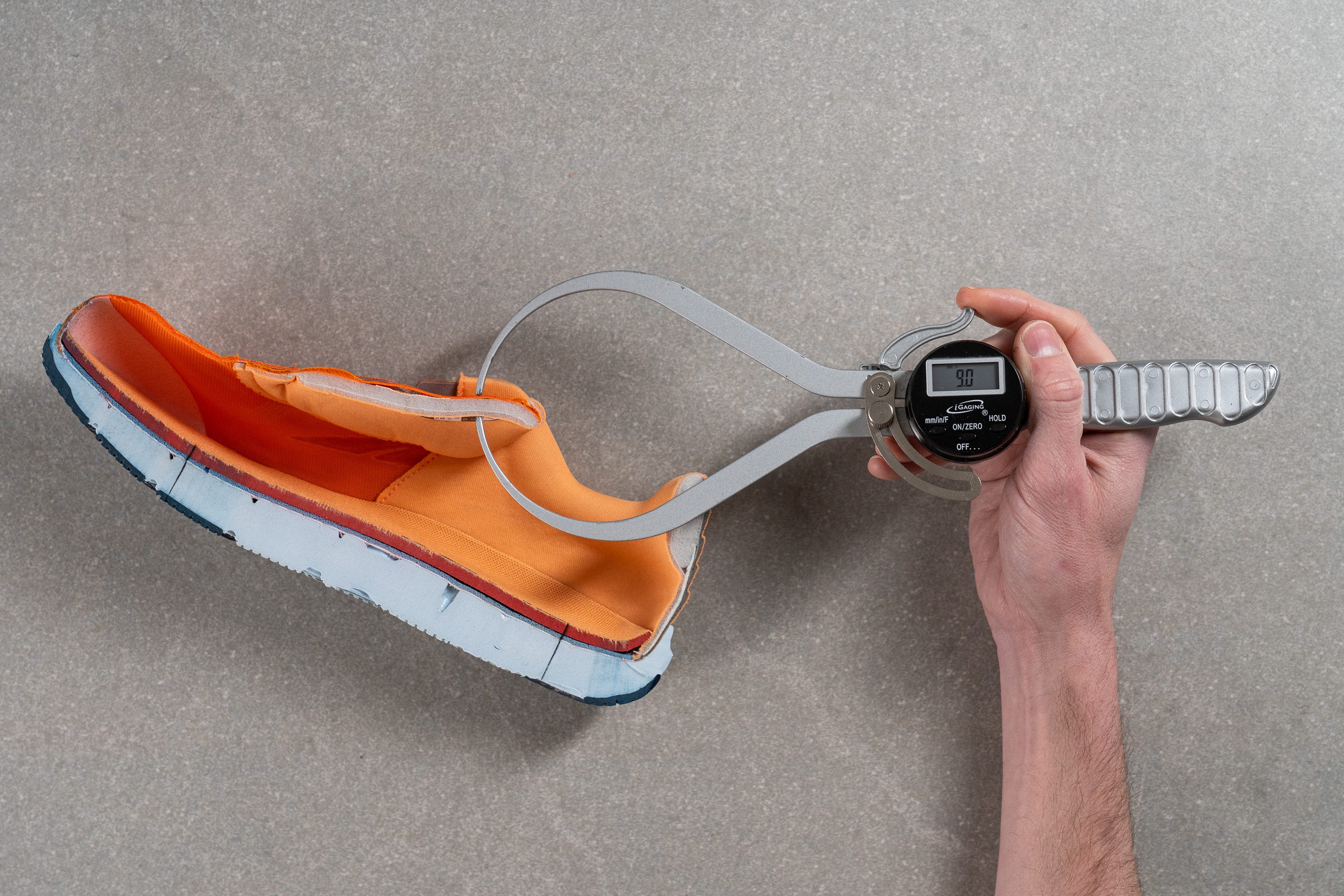
While Altra seems to have made a lot of weight-cutting decisions with the Rivera 4, they certainly didn't choose to skimp on padding throughout the upper. Even the finer mesh at the toebox is quite plush and stretchy while the heel collar conceals a plump pillowy pad to coddle our rearfoot.
| Rivera 4 | 9.0 mm |
| Average | 5.8 mm |
Tongue: gusset type
Despite the tongue not being gusseted at all, we didn't face any major issues with it slipping to the side during testing thanks to its central lace loop and chunky nature.
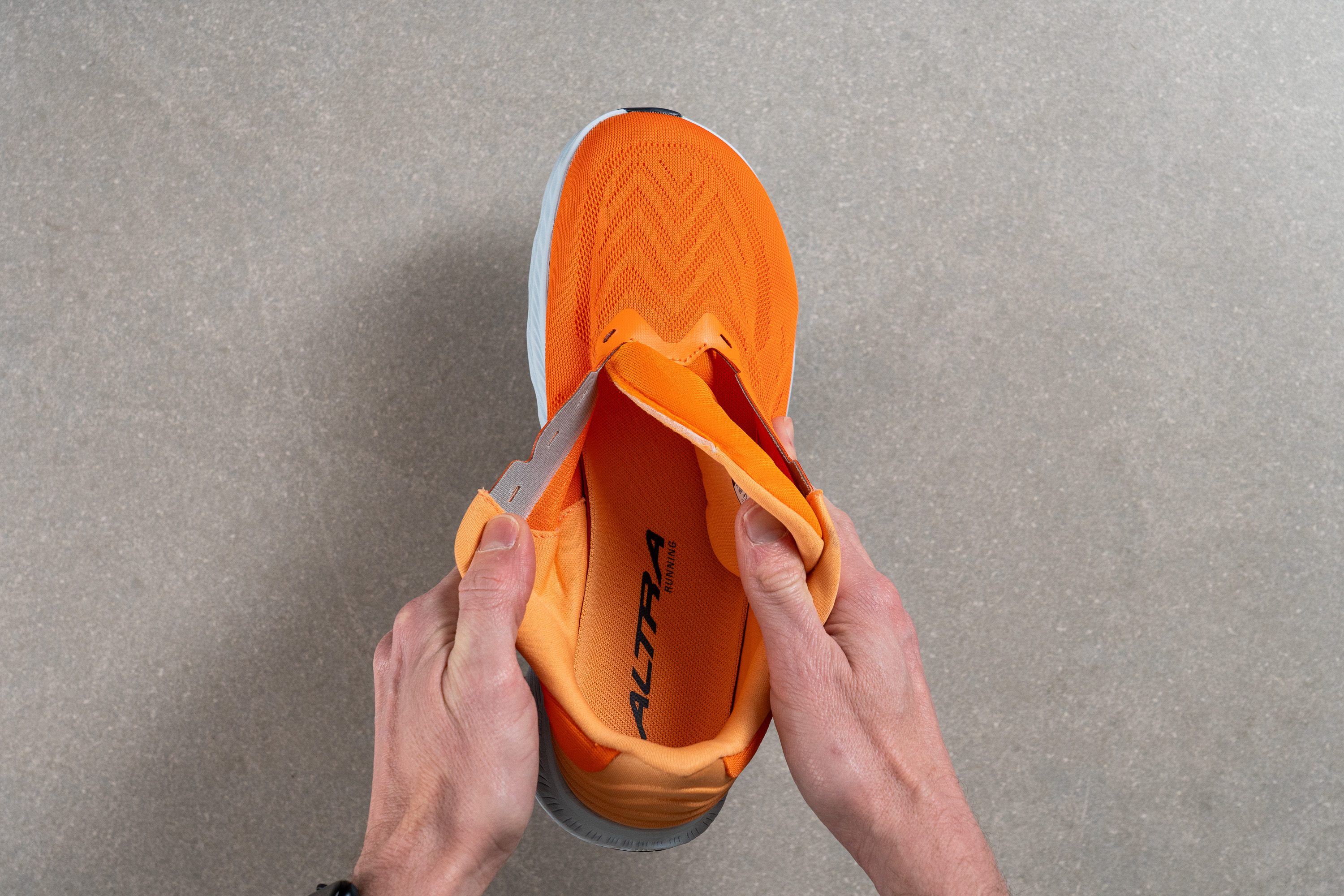
| Rivera 4 | None |
Heel tab
No finger loops or pull tabs on the Altra Rivera 4.
| Rivera 4 | None |
















































